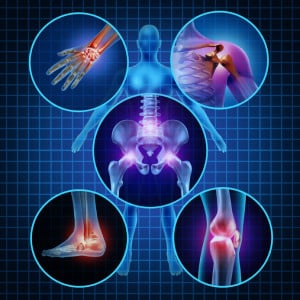 Inflammation is something that every person will experience multiple times in their life. Whether you are an athlete who has suffered a sports-related injury, or you are just a person who tweaked their back while lifting heavy boxes when you moved last month, there is no doubt that you have felt the impact of inflammation. This is one of the most commonly misunderstood ailments and Commonwealth Spine and Pain Management wants to shed some light on it.
Inflammation is something that every person will experience multiple times in their life. Whether you are an athlete who has suffered a sports-related injury, or you are just a person who tweaked their back while lifting heavy boxes when you moved last month, there is no doubt that you have felt the impact of inflammation. This is one of the most commonly misunderstood ailments and Commonwealth Spine and Pain Management wants to shed some light on it.
What is inflammation?
The immune system is an amazing thing. Your body literally has a defense mechanism built in to protect you whenever a threat is detected. Sometimes that threat comes from outside forces, such as a cut that is contaminated with foreign debris, like dirt and bacteria. Other times the threat is internal and is the result of a strained muscle, in which micro tears may be present in the muscular tissue. Whatever the situation, the immune system responds to the threat and/or injury by sending white blood cells to the affected tissue. These cells surround the threat in an effort to protect the tissue from being damaged any further. This collection of cells also tells the body to send more blood supply to the area in order to heal the affected tissue efficiently. The combination of the white blood cells and increased blood flow results in what we call inflammation.
Pros and Cons
The thing about inflammation is that while it is a natural response to support healing and safety, the increased blood flow and pressure to the area can also create pain and stiffness. When swelling occurs in the knee or in one of the many tiny joints of the back, it can become very difficult to bend or move around. While your body is trying to protect you, the discomfort that comes with that protection can almost be worse than the actual injury that created the inflammation.
Treatment
The treatment for inflammation is actually pretty simple. Non-steroidal analgesics (NSAIDs) are prescribed to reduce the swelling, which in turn gives pain relief. The most common NSAIDs are ibuprofen and naproxen. Cold therapy is also recommended, such as ice packs and cool baths or showers. In most cases heat is not recommended for an inflamed area as it can lead to an increase in swelling. If a limb is affected, elevation above the heart is also a common practice.
When to See Your Doctor
Inflammation can be a symptom of an injury, infection or underlying illness. If swelling is present and does not get better with NSAIDS, ice or elevation, it is important to see your doctor. If the inflamed area is hot to the touch and red, you should seek immediate medical attention. If the inflamed area is painful with or without manipulating the area and does not get better with NSAIDs, you should seek immediate medical attention. If you experience any flu-like symptoms to include nausea, vomiting, fever greater than 100.4, chills or body aches, you should seek immediate medical attention.
Commonwealth Spine and Pain Management is your Richmond Va pain management and treatment expert. Have a question or would like to make an appointment with one of our specialists? Contact us at (804) 288-7246 and speak to our expert staff today.
